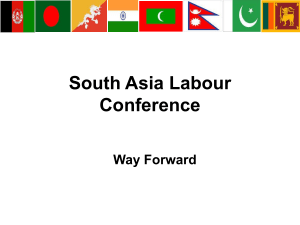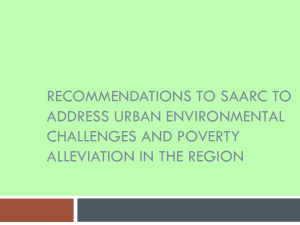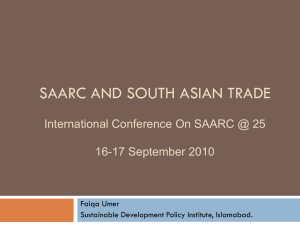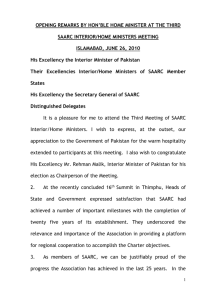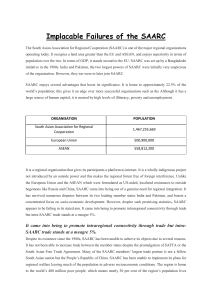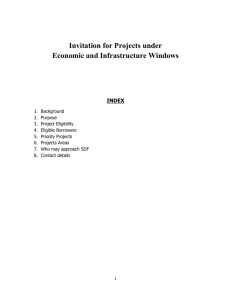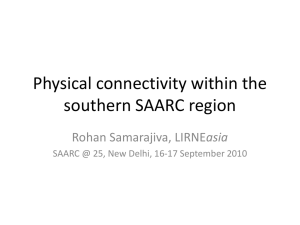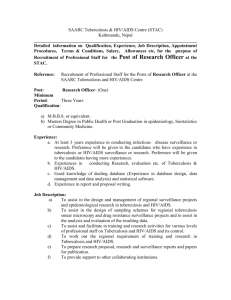Saman Kelegama
advertisement
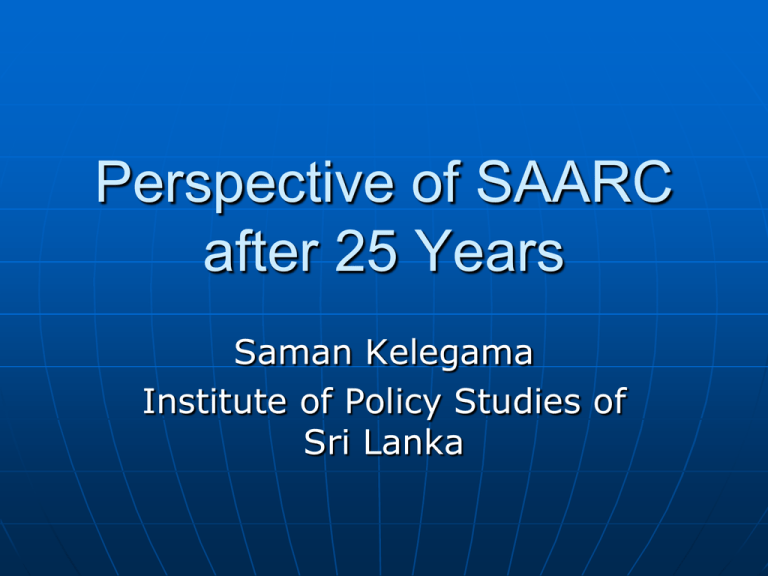
Perspective of SAARC after 25 Years Saman Kelegama Institute of Policy Studies of Sri Lanka SAARC Record: Not Impressive SAARC has proved to be a slow process vulnerable to regional politics SAARC decisions are clouded by regional politics (e.g., Pakistan not offering MFN status to India) SAARC decisions are not properly implemented Majority of the South Asian people is yet to feel the impact of SAARC cooperation Member Level Problems Nation state is evolving in the region thus an extra-national entity seems something to be reluctantly embraced Suspicion: Fear of Indian domination prevails among the smaller nations. Smaller nations ganging up against India is also a fear No binding commitments, thus commitments are most often not implemented Member Level Problems “trust deficit” a major problem Lack of commitment for regional cooperation – enthusiasm fades away after a SAARC Summit Little involvement of the business and academia in the SAARC process SAARC declarations: “ an exercise in competitive deception” (Muchkund Dubey) Problems of SAARC Charter – State centric cooperation SAARC has become a Foreign Ministry project with little interaction with other government agencies SAARC Secretariat has limited powers to drive the organization in between Summits SAARC Organization Structure Inter-governmental decision making structure has not kept up with global trends and South Asian demands Heavily bureaucratic with many layers of decision making – IGG, IGEG, CEA, etc. – decision making takes time SAARC institutions not accountable – Documentation Centre, Food Reserve, Meteorological Centre, etc. There is no accountability Outcome of 25 Years Provides Evidence 1985-1995 – 10 years of cooperation on noneconomic issues did not lead to much confidence building 1995-2005 – 10 years of SAPTA did not make a significant breakthrough, in fact, SAPTA repeated all the shortcomings seen in the Bangkok Agreement Post 2005 SAFTA characterized by a large ‘negative list’ (20% of tariff lines) and 53% of intraregional imports outside SAFTA Outcome Investment-trade nexus not properly functioning due to lack of investment liberalization – efficiency seeking industrial restructuring in the region is at a low level -- seen by low intraindustry trade Bilateral and subregional arrangements have complicated the situation for SAFTA (ASEAN did not experience such a problem before moving to AFTA) Deeper integration framework not in place– energy and transport integration at an elementary stage – connectivity poor There are some Achievements SAARC has activated a debate on regional cooperation in the second track South Asian or SAARC associations have come into operation Activated a Social Charter, Anti-Terrorism Charter, etc. India has since of late become an active participant: (a) 1. January 2008 – duty free market access to SAARC LDCs, (b) large contribution to SAARC Development Fund, etc Parallel Tracks to SAARC Tracks: Civil society, private sector, academia – ahead of member governments in regional cooperation These tracks (initiatives) have created a fraternity of South Asian academics, businesspersons, professionals, and others. They meet regularly even when Track I activities are dormant Journals, Magazines (e.g.,HIMAL) – give an extra-national perspective of the region to keep people informed of regional developments Communication between Track II and Track I is informal, ad hoc, and personalized What Can be Done ? Restructure the SAARC Organization structure, Charter, Secretariat ? Difficult Improve Track II and Track I interactions – can do -- based on the ASEAN Model – officials take part in Track II dialogues in non-official capacity, officials are released on sabbatical leave to work in Track II Bring the economic agenda to the forefront Economic gains overcoming politics SA: economics cannot dominate over political factors ? In ASEAN economic gains managed to push political differences aside at crucial times In the India-Sri Lanka Bilateral FTA too the economic gains for SL overcame political problems SAARC needs to reap some economic gains -- this will assist it to move forward to deepen economic integration Vision of GEP – not impossible GEP vision of a SAARC Economic Union is still possible Thank you

